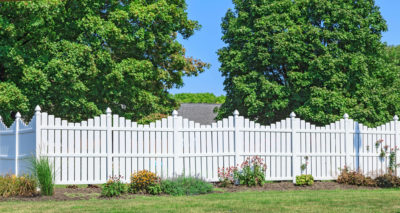Pros and Cons of a Vinyl Fence: Vinyl fences are popular among many homeowners. They offer a clean look and require very little maintenance. You don’t need to paint, stain, or seal them. Instead, you can wash them with soap and water, and they’ll look good as new. They also last a long time. Many vinyl fences stand strong for 20 to 30 years. That’s because they resist rot, rust, insects, and warping. Unlike wood, they hold up well in wet or humid weather.
In addition, vinyl fencing comes in many styles and colors. Whether you want privacy or a picket design, you can find an option to match your home. These fences also feel smooth, so they’re safe for kids and pets.

However, vinyl fencing does have downsides.
First, the upfront cost is usually higher than that of wood. While you save money later on maintenance, the installation hits your wallet harder. Next, vinyl can become brittle in very cold weather. It may crack if something hits it hard, like a lawnmower or a tree branch. Repair isn’t easy. Often, you need to replace a full panel, not just patch the damage.
Another issue is color. Over time, constant sun exposure can fade vinyl. You also can’t paint vinyl easily, so changing the color later is tough. While some vinyl is eco-friendly and recyclable, it’s still a plastic product, which raises concerns for some homeowners.
Overall, vinyl fencing works well if you want a clean look with little maintenance. Just be ready for a higher initial cost and less flexibility in color or repair.
Pros and Cons of a Vinyl Fence: I have one of each. The wood fence has been replaced about every ten to twelve years, but it does look better than the vinyl. During the high winds we had this year, most of our wood fence blew down, it was older so no surprise.




